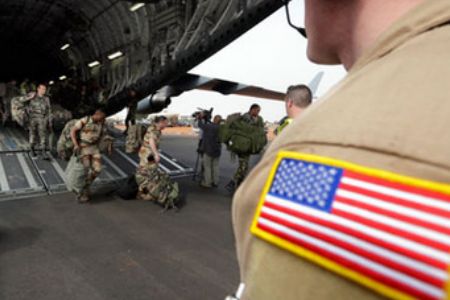
12/03/2013, by CLAS
Mali, Terrorism, and US Foreign Policy
In January 2013, David Cameron announced that British intelligence officers, Special Forces soldiers, aircraft and surveillance drones would all be deployed to ‘dismantle’ terrorist groups based in northern Mali, and called for a generational commitment to rout terrorist groups from the Sahel region.
In fact, such an effort has been ongoing for the past decade under the auspices of the United States ‘war on terror’ (since renamed by the Obama administration as the less controversial ‘Overseas Contingency Operations’). In the case of Mali and the surrounding region, the United States’ counterterrorism programmes have not only failed, but exacerbated an already complex and unstable situation.
In the aftermath of the 9/11 attacks in 2001, the Bush administration became concerned about the vast, ungoverned spaces in Africa, from the Horn of Africa in the East to the Gulf of Guinea in the West. According to the Bush administration, weak and failing states with porous borders would attract al Qaeda sympathisers fleeing Afghanistan. This assumption led to the establishment of the 2002 Pan Sahel Initiative — a programme in which US forces would train and equip security forces in Chad, Niger, Mauritania, and Mali. The perception of success led to the expansion of this programme in 2005 into the Trans-Sahara Counterterrorism Initiative (TSCTI). Under this programme, Washington undertook preventive counterterrorism measures across the ungoverned spaces of Africa, including train and equip programmes, stability and reconstruction operations, and information operations to win the ‘hearts and minds’ of populations deemed to be at risk of exploitation by militant Islamists. This approach signalled a move towards irregular, rather than conventional, warfare: the US would prevent terrorists from exploiting these countries not by invading them but by trying to build the capacity of local security forces, and gain the support of the indigenous population through winning the propaganda war and undertaking stability and reconstruction operations so as to diminish the potential appeal of extremism.
The results of these US programmes—which are still ongoing—should serve as a warning for those arguing that further intervention is the answer to the recent problems in Mali. The TSCTI has failed to prevent the emergence of new militant Islamist groups in the region. In Mali, the last decade has seen the rise of a new Al Qaeda franchise (Al Qaeda in the Islamic Maghreb), and the Ansar Dine group, as well as Boko Haram in north-east Nigeria—another TSCTI country. Ultimately the Western-centric framework of the ‘war on terror’, which remains the driving force behind US intervention in the Sahel, remains too simplistic to account for the complex array of forces that produce these extremist groups. Transposing the narrative of the ‘war on terror’ onto Africa precludes discussion of local dynamics that are often important drivers of conflict, such as the Tauareg rebellion in northern Mali, and the weaknesses of the post-colonial Nigerian state. Without a full understanding of the causes of Islamic militancy in Africa, Western policy makers cannot craft appropriate responses. Moreover, the wider pattern in Washington’s ‘war on terror’—whether in Iraq, Afghanistan, the Philippines, or Mali—is that US (and Western) intervention tends to generate terrorism rather than prevent it. A Western presence often causes resentment that results in a violent backlash.
The French, British, and Americans should proceed with caution. Although the impulse to do something is strong, taking the wrong action can make things worse.
Maria Ryan, Department of American and Canadian Studies
No comments yet, fill out a comment to be the first

Leave a Reply